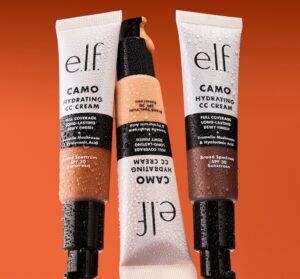Liver spots or solar lentigines, discolorations caused by prolonged sun exposure, are harmless discolorations which do not need medical intervention but may cause cosmetic concerns for some individuals.
The spots are most frequently seen among adults over 50 but may also appear on younger individuals who spend too much time outdoors in direct sunlight. Liver spots typically resemble freckles in appearance and range in hue from light brown to deep brown in hue.
Table of Contents
Causes
Liver spots (also referred to as age spots or lentigines), are common skin conditions characterized by pigmented spots found mainly on areas exposed to direct sunlight such as the face and backs of hands. Their sizes typically range from several millimeters up to half an inch, with colors that range from light tan through dark brown or even black hues; their shape tends to be oval-shaped with well-defined borders.
While anyone can develop skin discolorations, they are most commonly seeing among adults over 40; however, younger individuals exposed to UV radiation such as sunlight or tanning beds may also develop them due to overexposure of melanin-producing cells to UV rays for too long can experience an excess production.
Liver spots may also cause by genetic predisposition. Some individuals are more prone to liver spots than others; if your family history includes liver diseases, it’s wise to discuss this matter with your healthcare provider as soon as possible.
Although generally harmless, individuals seeking cosmetic relief from liver spots may wish to reduce the appearance of them for cosmetic reasons. A variety of methods exist that can lighten them. Before turning to these products for help with liver spots fading, however, always consult your dermatologist first as they can provide the most appropriate solutions for you.
Consult a dermatologist immediately if your liver spots experience sudden changes, such as sudden increase in size or irregular border features, as well as any change in color (especially darkening). Such sudden changes could indicate skin cancer.
Symptoms
Liver spots (also called lentigines) resemble freckles in appearance and can appear anywhere on the body; they are most frequently found on parts that receive direct sun, such as hands and face. Liver spots typically have oval-shaped spots in skin color with dark brown or black hues and an oval shape; over time these may grow larger, or they could fade completely over time. These lesions do not cause pain or other health complications and do not pose a health threat to individuals who may develop them.
These spots appear due to UVA/UVB rays from sunlight speeding up melanin production – the pigment responsible for giving your skin its hue – which results in its excess melanin clumping together and creating spots on people with fair skin or light-colored hair, especially after prolonged sun exposure or tanning bed use. This phenomenon often appears among those who spend an extended amount of time outdoors or use tanning beds.
Not to mistaken with skin cancer, these spots tend to form among those who have a family history of it as early as their teenage years. Though not a definitive sign, if any new changes appear in your skin’s appearance it’s wise to visit a dermatologist as this could indicate more serious issues that need further assessment.
Dependent upon their size, age and speed of fading, spots may not require treatment. But if they become bothersome over time or worsen in appearance, there are various products and treatments that can help fade them quickly.
Most treatments involve topical agents that help lighten pigmentation, like hydroquinone. Unfortunately, this ingredient isn’t safe for darker skin tones and violates the Byrdie Clean Beauty Pledge; therefore, it’s wiser to consult a physician first before adding skin-whitening ingredients into your routine. A physician will help ensure your spot is truly lentigo rather than skin cancer or another issue and recommend safest and most effective ways of treating it.
Diagnosis
An appearance of liver spots on your skin may be alarming, especially if they appear out of nowhere or grow gradually larger and darker. They may resemble deadly skin cancer known as melanoma; therefore, it’s vital that they’re distinguished as cosmetic dark spots from health risks. While liver spots won’t pose any significant medical problems, you may still wish to pursue treatment for aesthetic reasons.
Liver spots, also referred to as sunspots or solar lentigines, are flat patches of brown or black pigmentation found on parts of your body exposed to direct sunlight. While liver spots tend to form most often on those who spend extensive amounts of time outside in direct sunlight and have an tanned complexion, they can appear even among those with light complexions.
Melanocytes produce melanin, the pigment responsible for giving your skin its color, but when UV rays hit the skin, they accelerate this process and lead to sudden melanin production and liver spots forming on your body. Size can range from millimeters up to half an inch with defined edges that appear round or oval in shape and often occur singly or clustered together.
Visual inspection may be enough to detect dark spots; however, if they become larger or darker in appearance or change in texture or have irregular borders you should seek medical advice immediately.
While liver spots may not pose any direct health risk, many find them bothersome enough to have them removed. Cryotherapy, chemical peels such as Cosmelan peels or MGSKIN’s Mesopeels as well as skin lightening creams containing hydroquinone or tranexamic acid may all be effective ways of eliminating dark spots on your skin.
If liver spots are bothering you and causing concern, reach out to Bodycraft Clinic’s team of dermatologists for a consultation session. They will conduct a complete examination of both your skin and history to help us determine the most appropriate course of action for you.
Treatments
Even when using sunscreen and limiting our sun exposure, dark spots often develop on our skin despite using sunscreen and taking steps to limit our time in the sun. These spots known as liver spots, age spots or solar lentigines (len-TIJ-ah-neez). These appear on areas that receive frequent sun exposure like our face, hands, neck and arms – usually light to dark brown in hue and do not affect liver health or cause cancer; many seek treatment simply for aesthetic purposes.
Liver spots caused by exposure to sunlight, which speeds up melanin production – the pigment responsible for skin pigmentation and leading to sunburns or tans. Over time, melanin accumulates in specific spots on our bodies and coalesces to form darker spots similar to freckles that eventually form liver spots ranging in size from a few tenths of an inch up to about half an inch wide and usually take the form of flat circular or oval patches on our bodies that receive frequent sun exposure or frequent time in tanning beds.
Liver spots easily recognized because they resemble other potentially serious conditions such as actinic keratoses and melanoma (a type of skin cancer). Due to their similarity to more dangerous spots, it is crucial that liver spots diagnosed by a dermatologist before beginning any form of treatment.
There are various techniques for lightening or eliminating sun spots, also known as liver spots. One option is using bleaching cream or lotion containing hydroquinone; these products gradually lighten skin over several months. A physician can suggest other solutions if over-the-counter creams do not prove successful, such as chemical peels and laser therapies; these options are safer than using bleaching products on their own without medical advice. In some instances, however, biopsies may need to conducted in order to confirm that dark spots are harmless rather than cancerous.
Recommended Readings:
- 7 Causes of White Nail Spots
- What Are Cafe-Au-Lait Spots?
- Treatment For Phytophotodermatitis
- Khloe Kardashian Skin Cancer Scare
- What Causes Sweating? Understanding the Root Causes







